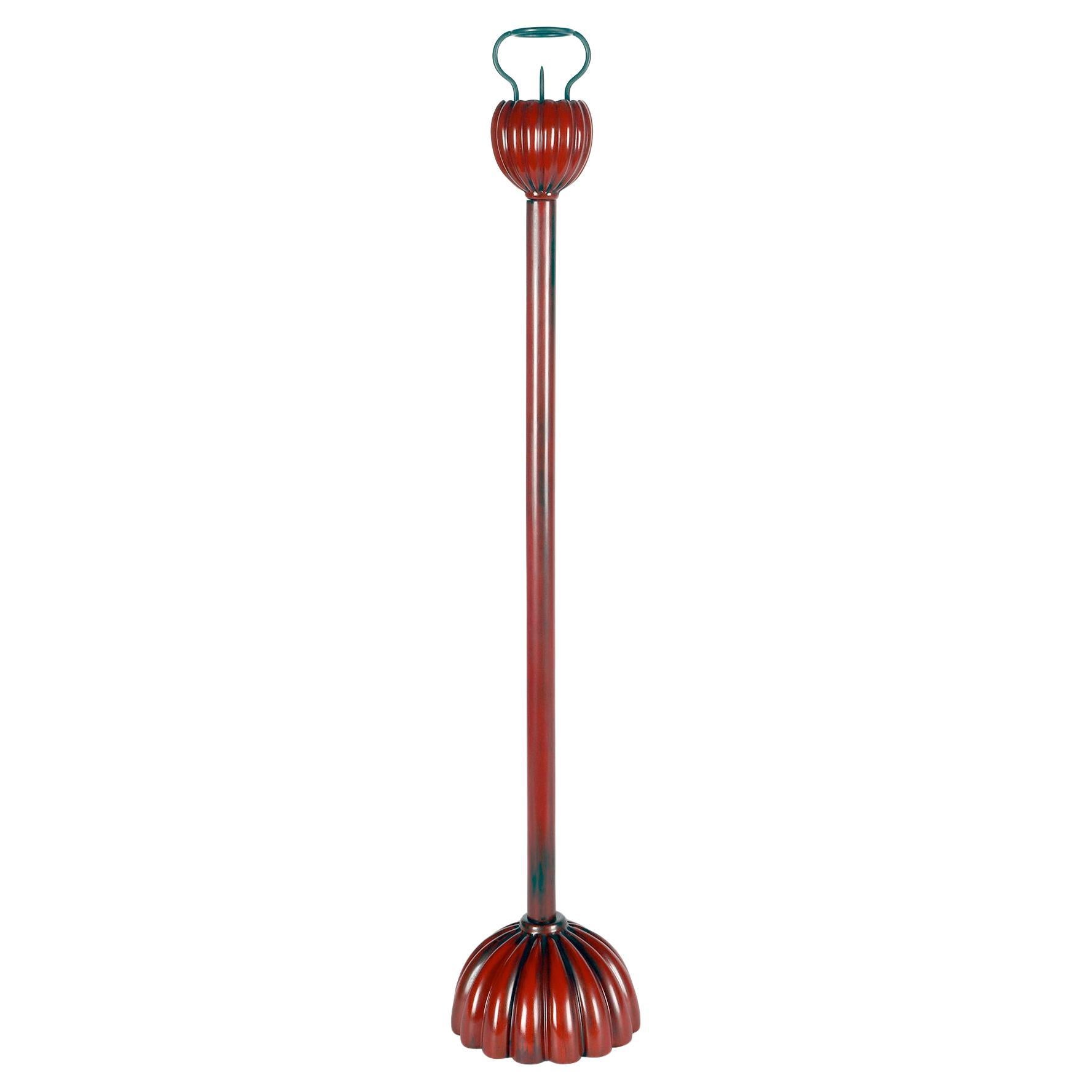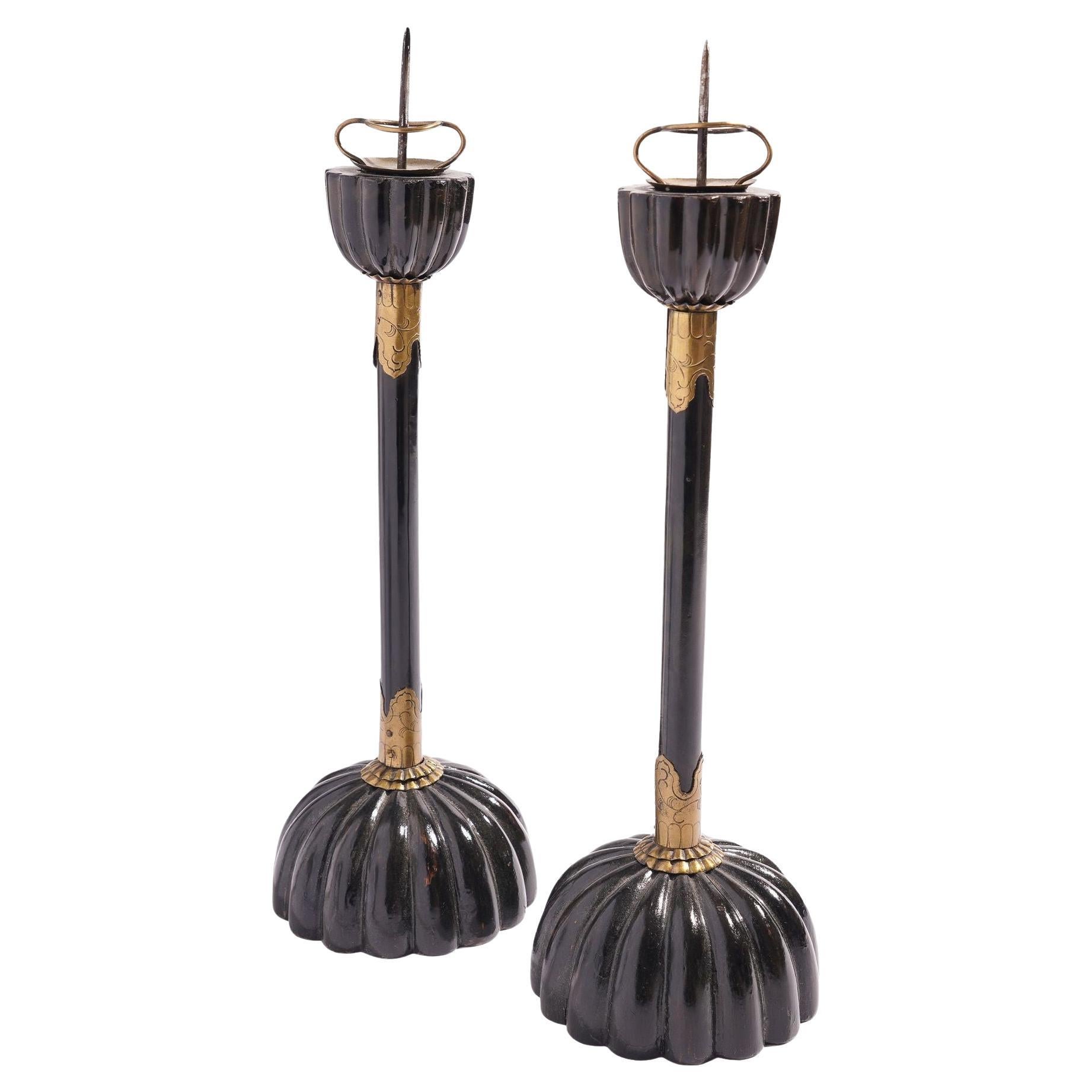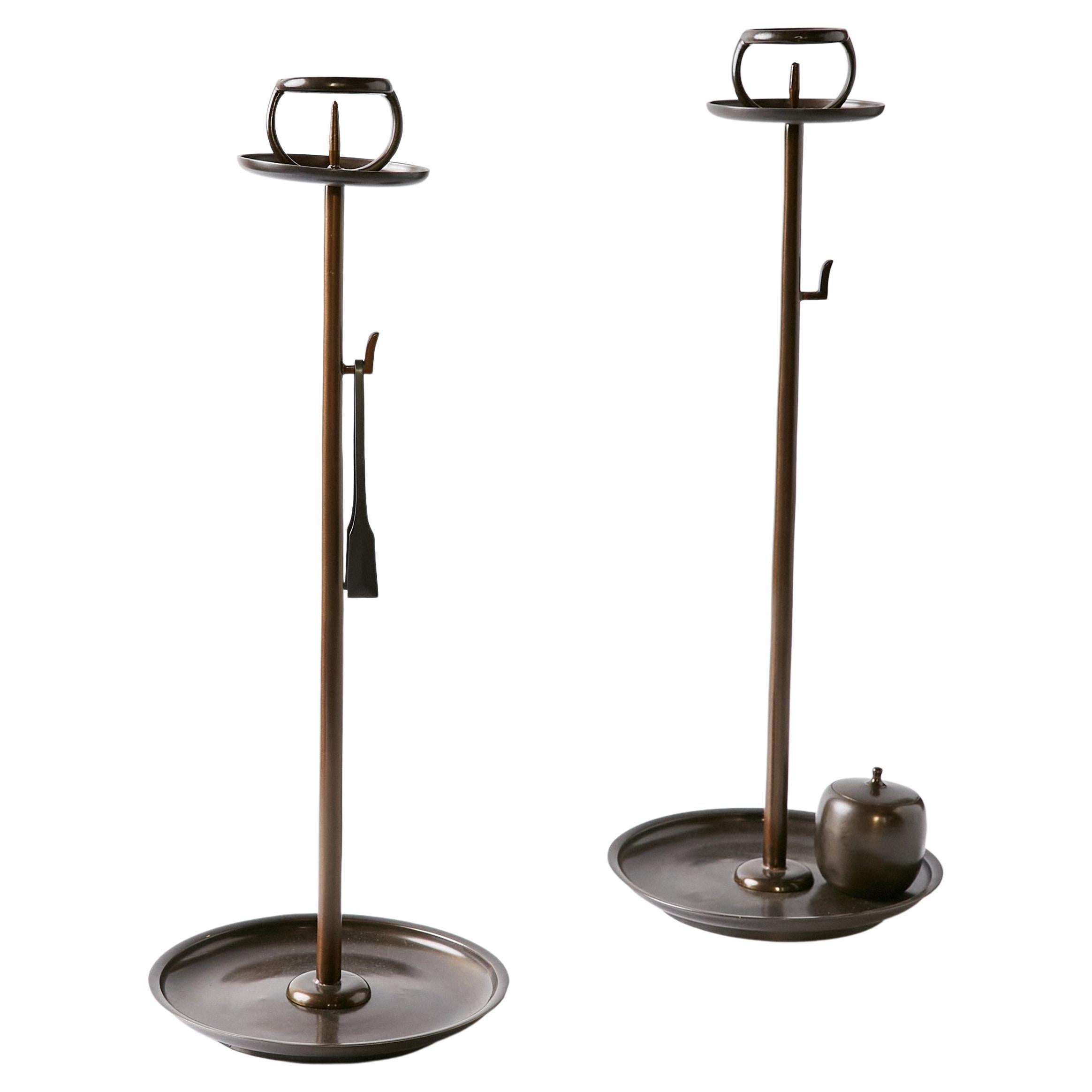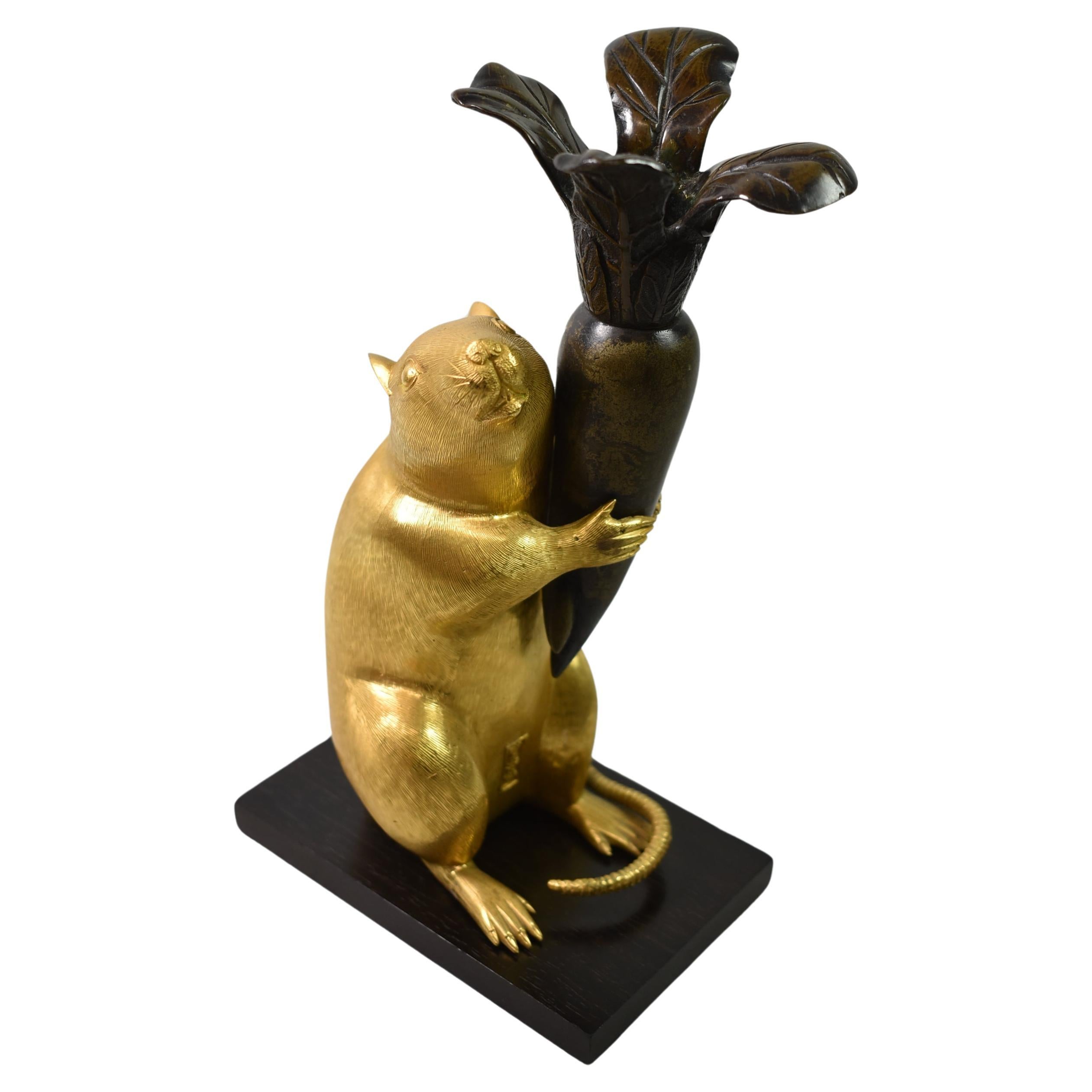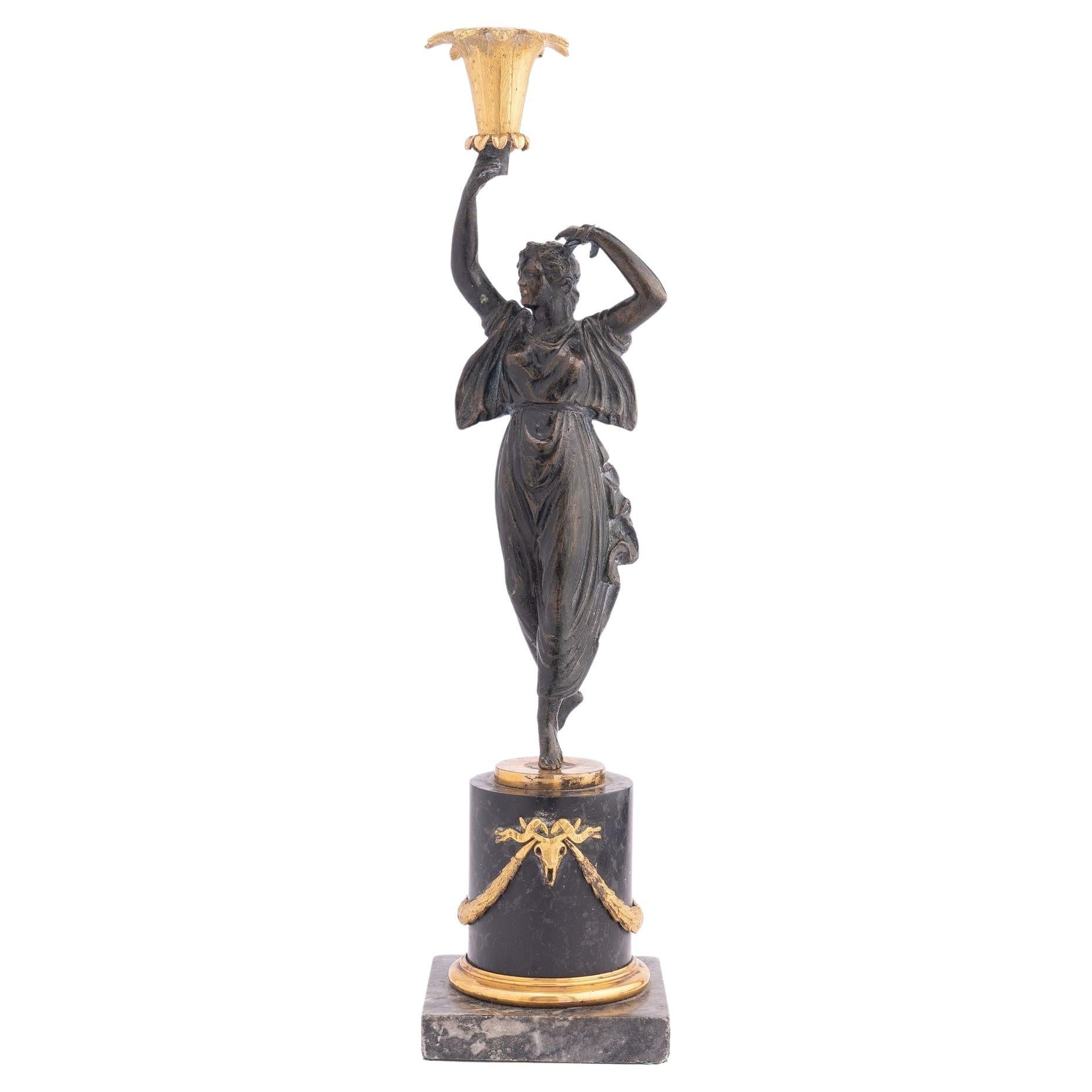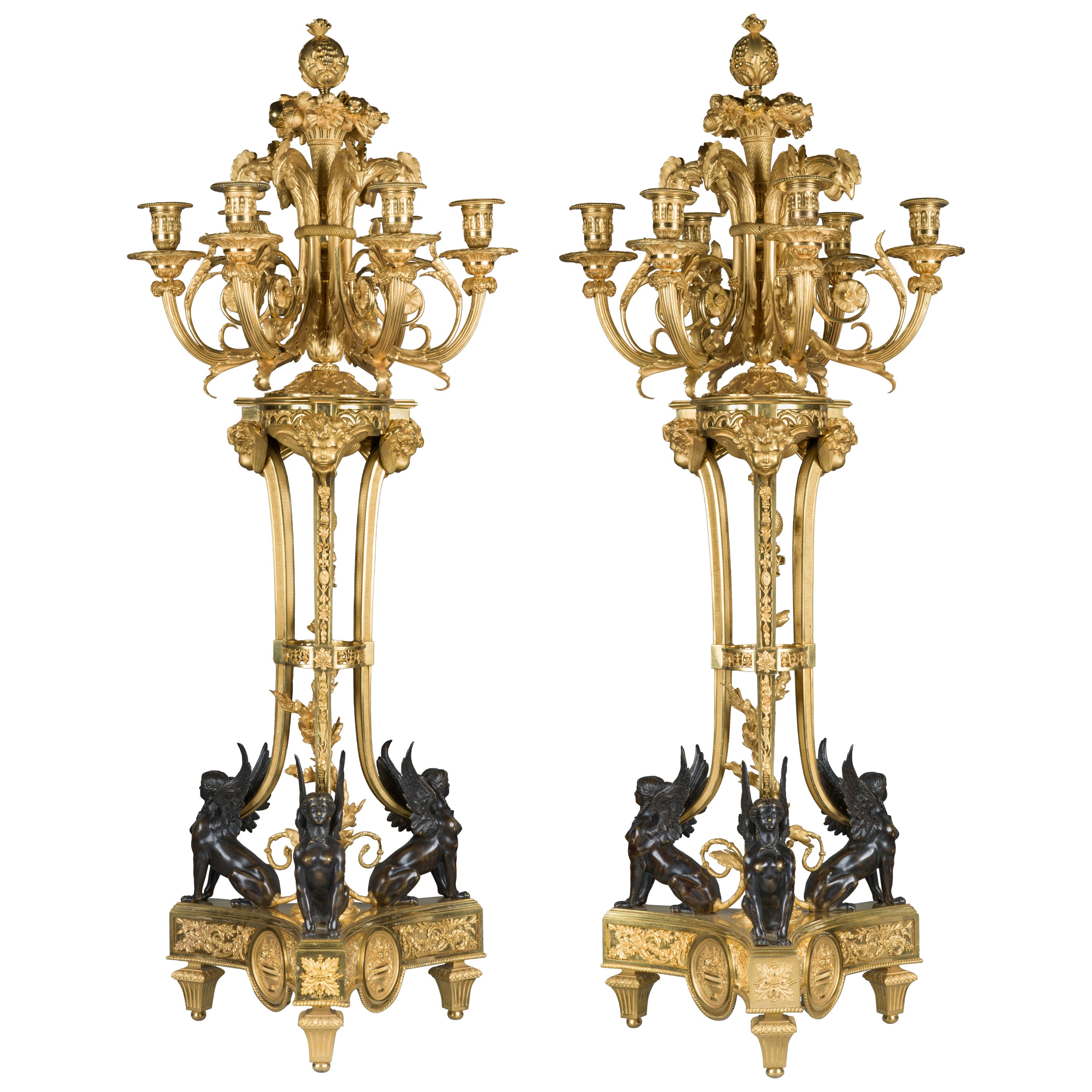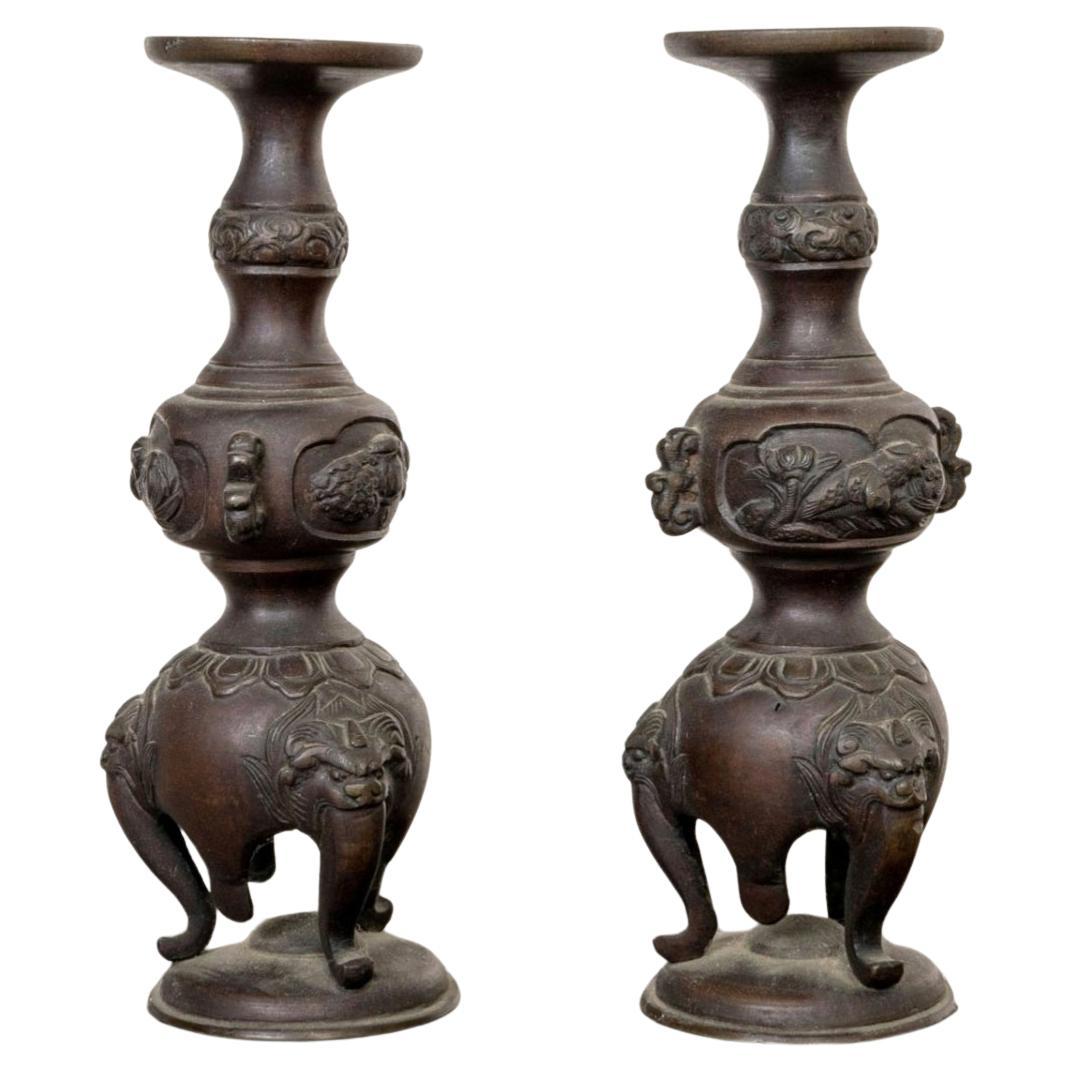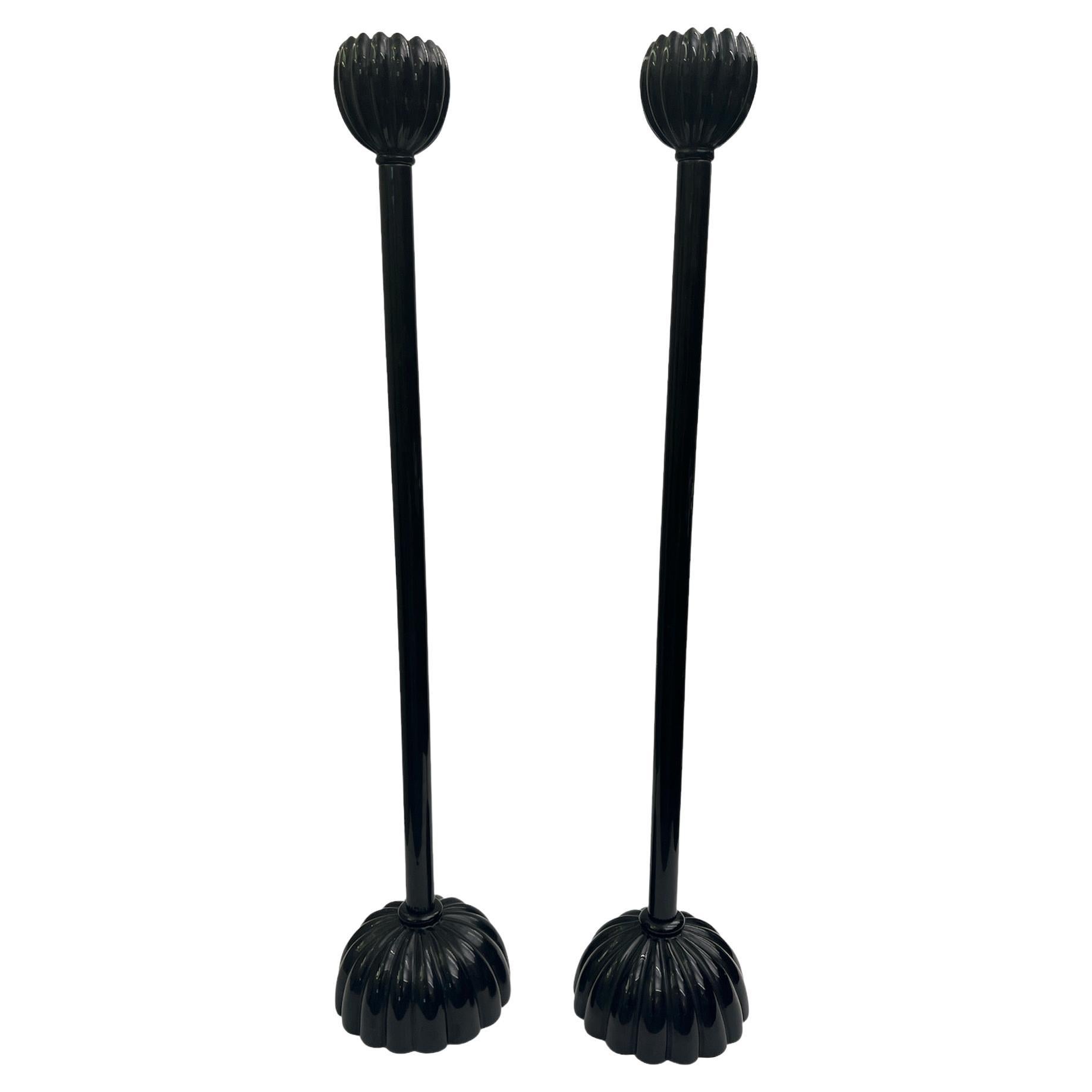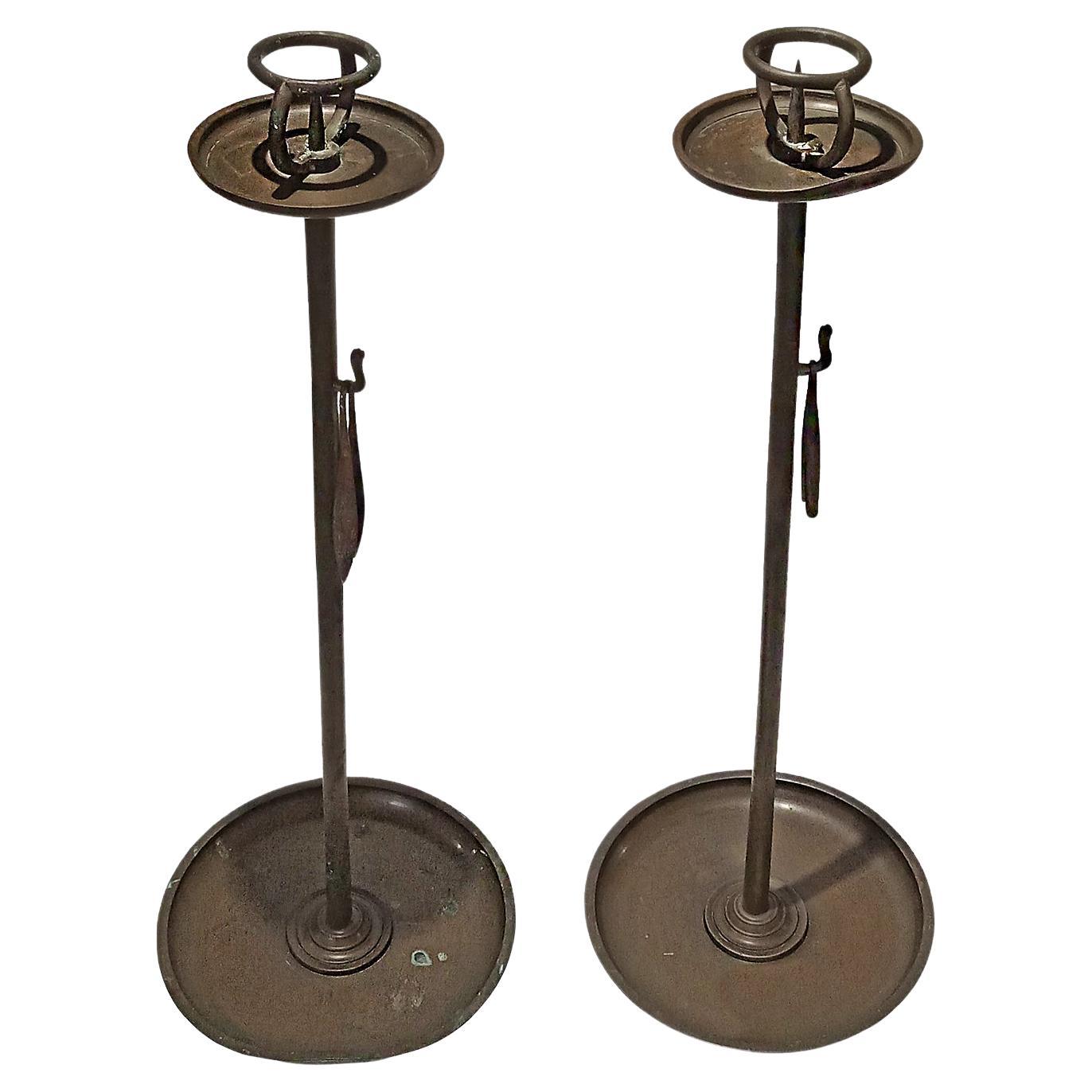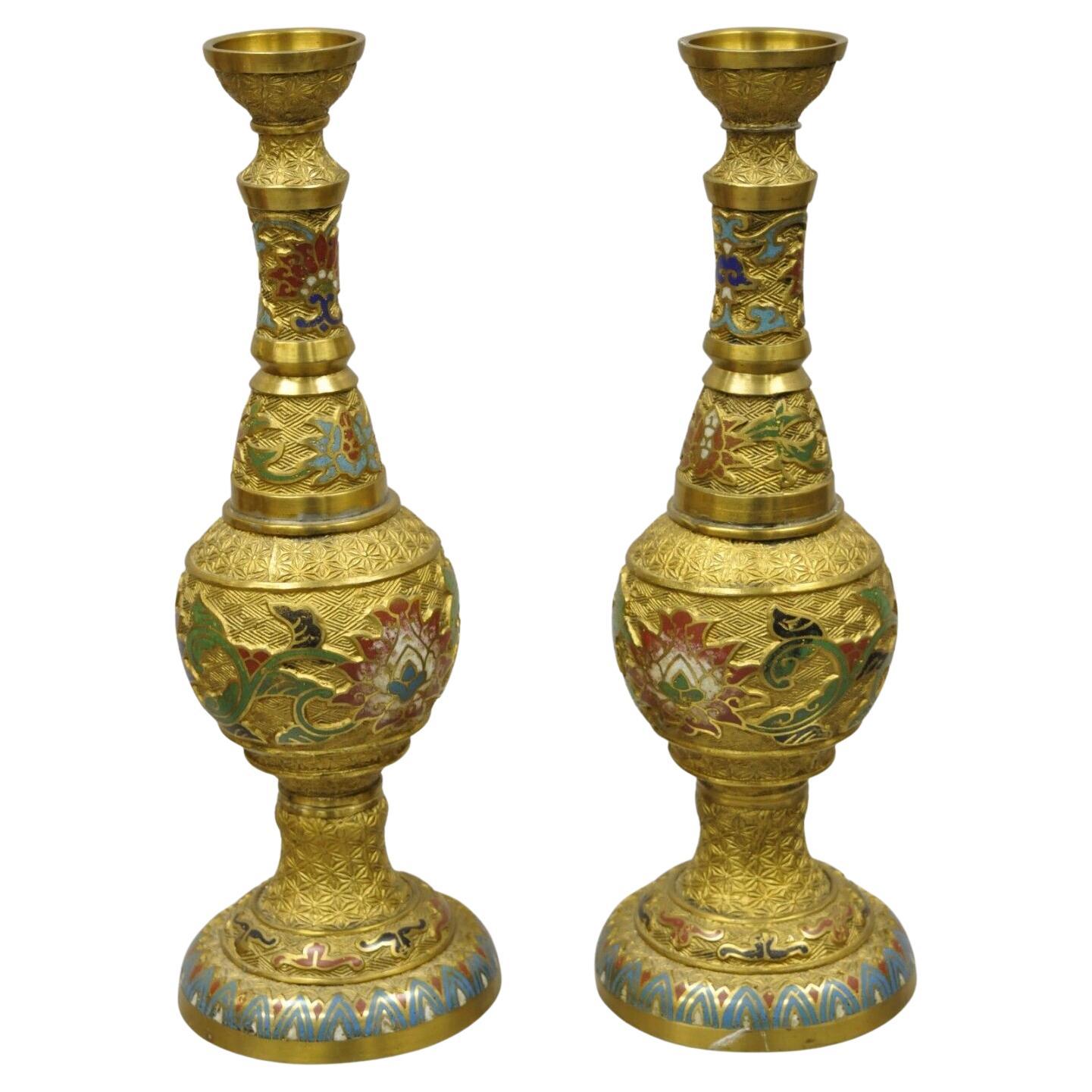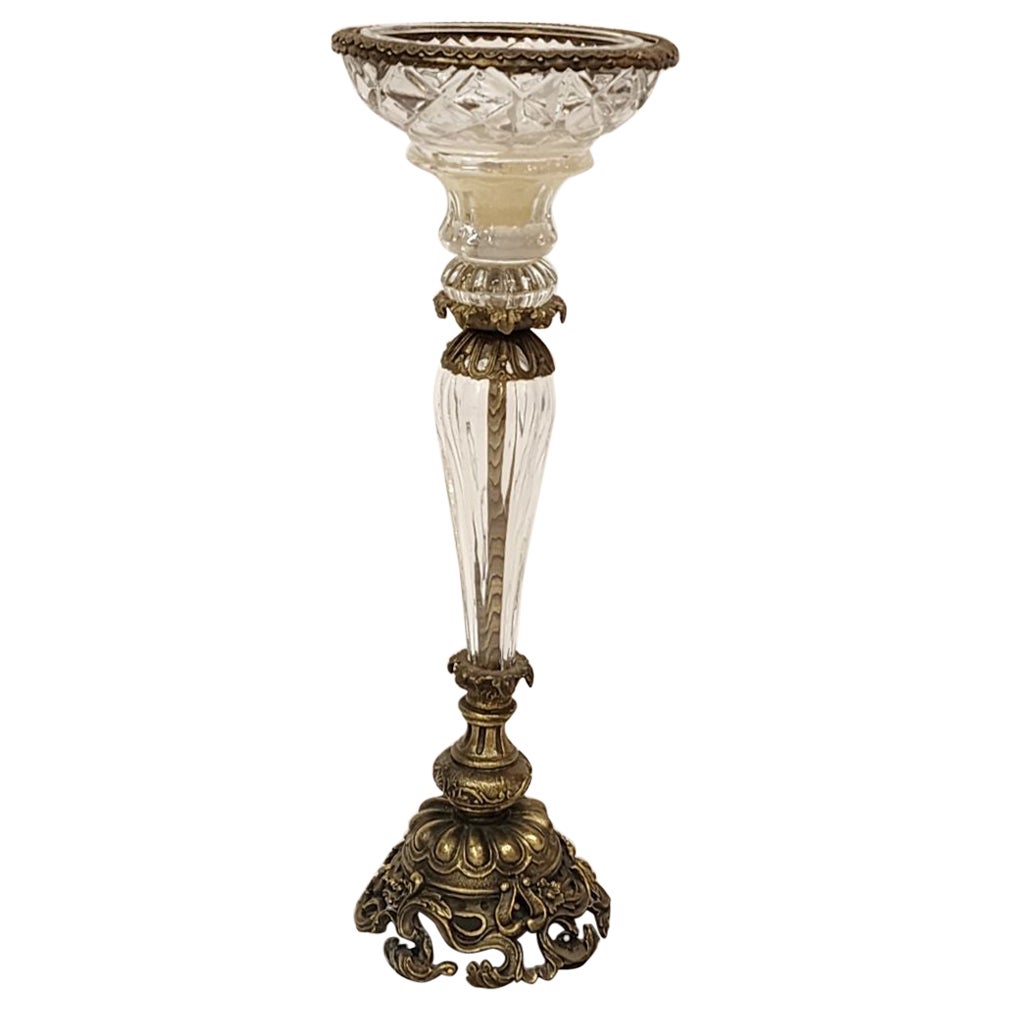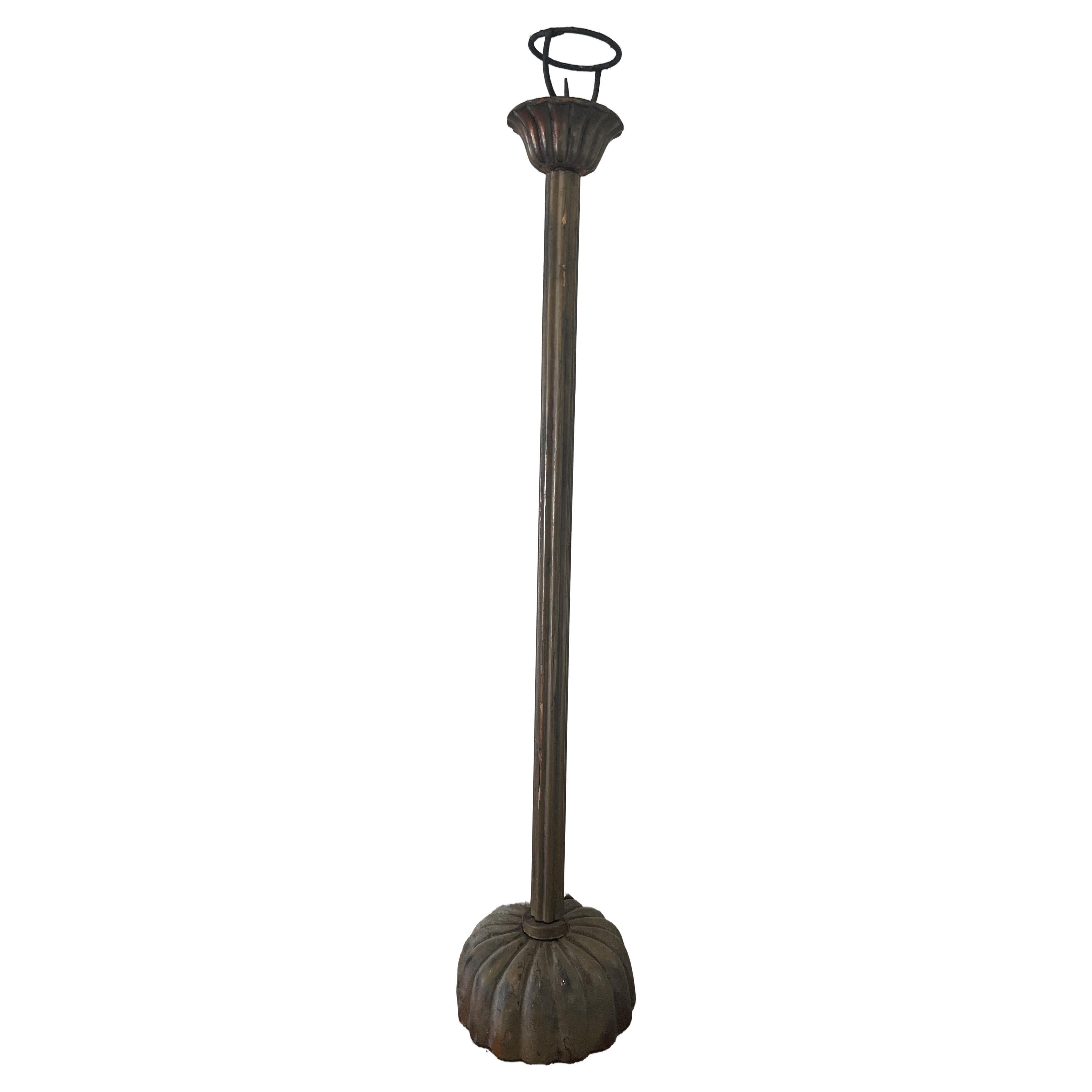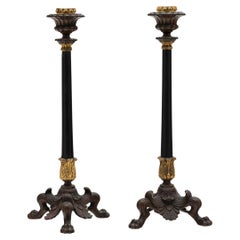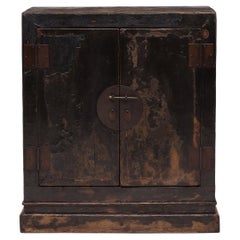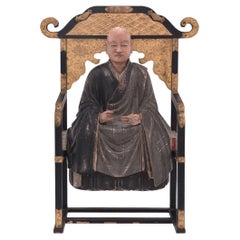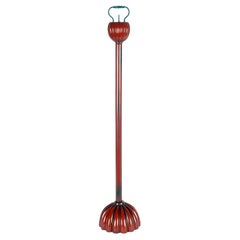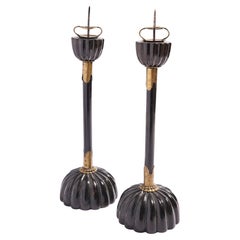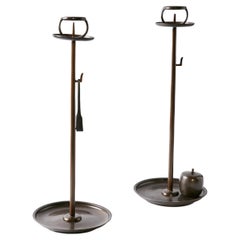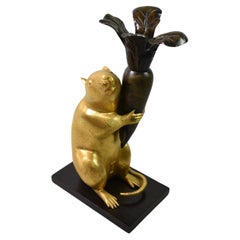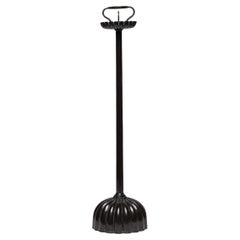
Japanese Black Lacquer Bronze Shokudai Candlestick, c. 1800
View Similar Items
Want more images or videos?
Request additional images or videos from the seller
1 of 5
Japanese Black Lacquer Bronze Shokudai Candlestick, c. 1800
$1,280List Price
About the Item
- Dimensions:Height: 26.5 in (67.31 cm)Width: 7 in (17.78 cm)Depth: 7 in (17.78 cm)
- Style:Edo (Of the Period)
- Materials and Techniques:
- Place of Origin:
- Period:
- Date of Manufacture:c. 1800
- Condition:Wear consistent with age and use.
- Seller Location:Chicago, IL
- Reference Number:Seller: CKJH0061stDibs: LU820036472582
About the Seller
5.0
Platinum Seller
Premium sellers with a 4.7+ rating and 24-hour response times
Established in 1997
1stDibs seller since 2006
1,710 sales on 1stDibs
Typical response time: 1 hour
Authenticity Guarantee
In the unlikely event there’s an issue with an item’s authenticity, contact us within 1 year for a full refund. DetailsMoney-Back Guarantee
If your item is not as described, is damaged in transit, or does not arrive, contact us within 7 days for a full refund. Details24-Hour Cancellation
You have a 24-hour grace period in which to reconsider your purchase, with no questions asked.Vetted Professional Sellers
Our world-class sellers must adhere to strict standards for service and quality, maintaining the integrity of our listings.Price-Match Guarantee
If you find that a seller listed the same item for a lower price elsewhere, we’ll match it.Trusted Global Delivery
Our best-in-class carrier network provides specialized shipping options worldwide, including custom delivery.More From This Seller
View AllPair of French Gilt Bronze and Slate Candlesticks, c. 1850
Located in Chicago, IL
This regal pair of bronze and slate candlesticks originated in 19th-century France and are beautifully detailed with molded and gilt embellishments. Crafted in the style of Empire furniture, each candlestick rests on a triform bronze base of claw feet and petal scrollwork, topped by a gilt acanthus leaf throne supporting a simple black slate stem. The sleek stone posts in turn support an urn-form bronze capital with floral and gilt elements. A gorgeous example of French opulence...
Category
Antique Mid-19th Century French Empire Candlesticks
Materials
Slate, Bronze
Chinese Black Lacquer Book Chest, c. 1800
Located in Chicago, IL
A rolled-up scroll or treasured root pot may have once been among the erudite objects stored in this stately 19th-century book chest. Expertly constructed of northern elm (yumu) with...
Category
Antique Early 19th Century Chinese Qing Furniture
Materials
Elm
Japanese Seated Portrait of a Zen Master, c. 1800
Located in Chicago, IL
This 19th century Japanese sculpture likely portrays an accomplished teacher of Japanese Zen Buddhism. Developed from wood with a polychrome finish, this monk is expertly carved with...
Category
Antique Early 19th Century Japanese Edo Figurative Sculptures
Materials
Wood
Japanese Zushi Traveling Shrine of Bishamonten, c. 1800
Located in Chicago, IL
This gorgeous Japanese red lacquer traveling shrine (zushi) protects a miniature statue of Bishamonten, the Buddhist God of Warfare here depicted as an armor-clad warrior. A fearsome protector, he is thought to defend sacred places, punish evil-doers, expel demons and bestow wealth. In this example, Bishamonten stands atop a crouching demon, dressed in finely painted armor...
Category
Antique Mid-19th Century Japanese Edo Figurative Sculptures
Materials
Wood
Chinese Painted Black Lacquer Scholars' Cabinet, c. 1800
Located in Chicago, IL
Constructed with four doors, this spectacular Qing-dynasty cabinet from the mid-19th century is lavishly painted with scenes of courtly life in a grand palace garden. Seamlessly constructed and darkly lacquered, the tall cabinet provides the perfect blank canvas for an artist’s painted embellishments.
The upper doors depict a gathering of scholar-officials and fine ladies in a traditional courtyard pavilion. The lower doors are painted with mythical wise men navigating the wilderness with their young attendants. Surrounding the lower doors are several boys leaping about and playing together, a version of the Hundred Boys...
Category
Antique Early 19th Century Chinese Qing Cabinets
Materials
Elm, Lacquer
Pair of French Gilt Bronze and Slate Candelabras, c. 1850
Located in Chicago, IL
This regal pair of bronze and slate candelabras originated in 19th-century France and are beautifully detailed with molded and gilt embellishments. Crafted in the style of Empire furniture, each candlestick rests on a tiered, triform bronze base of gilt foliate scrollwork surrounding a central baluster post. From each base, a sleek stone stem of polished black slate rises to support the cast bronze top of three curved arms and four candle dishes, embellished with further gilt elements and bobèches, or drip pans. A gorgeous example of French opulence...
Category
Antique Mid-19th Century French Empire Candelabras
Materials
Slate, Bronze
You May Also Like
Antique temple Shokudai candlestick Japan end of 19th century.
Located in Milan, IT
Antique red lacquer wood temple Shokudai candlestick with crysantenum shaped base, original finish consistent of its age. Bronze spike candle holder at top. Meiji period (1868-1912),...
Category
Antique Late 19th Century Japanese Candlesticks
Materials
Metal, Bronze
Pair of Japanese black lacquered altar sticks, c. 1800's
Located in Kenilworth, IL
Pair of Japanese black lacquered hardwood altar candlesticks. The sticks feature a melon carved base, lacquered wood rod with engraved brass fittings, and a melon carved candle cup w...
Category
Antique 19th Century Japanese Candlesticks
Materials
Brass
Pair of Antique Shokudai Candle Stand from Japan
Located in Philadelphia, PA
Set of two antique Shokudai candle stands. Made in bronze.
Category
Antique 19th Century Japanese Candlesticks
Materials
Bronze
$2,190 / set
Japanese Meiji Bronze Rat Candlestick Holder
Located in Toledo, OH
Japanese Meiji Bronze Rat Candlestick Holder from the Meiji Period (1868-1912). Charming bronze candlestick of a rat holding a Japanese turnip as the leaves...
Category
Antique Late 19th Century Japanese Meiji Candlesticks
Materials
Bronze
French Empire Parcel Gilt Bronze Figural Candlestick, 1800-1810
Located in Kenilworth, IL
Patinated and parcel gilt cast bronze figural candlestick on a circular marble base with square plinth. The figure, standing on one foot, holds a leafy form fire gilt candle cup abov...
Category
Antique Early 19th Century French Empire Candlesticks
Materials
Marble, Bronze
Pair of candlesticks. Bronze (blued and gilt). France, circa 1800.
Located in Madrid, ES
Pair of candlesticks. Bronze (blued and gilt). France, circa 1800.
A pair of six-light bronze candelabras, a type often called "tripod" due to their shape. A base with three projections, placed on inverted truncated pyramidal architectural elements and with reliefs and medallions on the exterior faces, serves as the base for three seated sphinxes made of burnished bronze with gilded tails. From their backs, three upward-facing rods emerge, each ending in children's heads with butterfly wings. These sphinxes are decorated with raised candelabras secured by an openwork band (note the spiraling bouquet inside). From the heads, a circular shape with projections emerges, on which the actual shaft of the candelabra rests, topped with a pomegranate on a floral arrangement. The arms of the candelabras, ending in lighters, feature delicate scrolls and rooster heads. Note the varying textures of the material and the great amount of detail present in the architectural, vegetal, and figurative elements. The design of these vase shaped candlesticks was enormously successful, and numerous variants with slight modifications were subsequently created, including sphinxes and goat heads. On April 16, 1787, François Rémond (c. 1747–1812) supplied Daguerre with eight “girandoles en trepied” (as they were often known in literature), identified by some experts as the eight candlesticks of this model purchased from Daguerre by George, Prince of Wales, later King George IV, for Carlton House. The largest, ten-light model with a vase and rooster heads, was created around 1786. A pair of this model is recorded in the 1836 Inventory of the Legendre de Lucay collection, and another pair is known to have been commissioned for Marie Antoinette's Salon des Nobles at Versailles. Compare this example with the griffin chandelier...
Category
Antique 19th Century European Other Candelabras
Materials
Bronze
Recently Viewed
View AllMore Ways To Browse
Antique Japanese Candlesticks
Japanese Bronze Candlestick
Bronze Pricket Candlesticks
Japanese Bronze Candle Holders
Japanese Lacquered Candlesticks
Chrysanthemum Candlesticks
German Art Nouveau Candlesticks
Pair Of Georgian Silver Candlesticks
Antique Thread Holder
Hexagonal Candlesticks
Alter Candle
Brass Pricket
Dragon Candle Holders
Candlestick Sweden Wood
Corinthian Candlestick Holder
Dansk Iron
Dansk Silver Plate
Dolphin Candlestick
